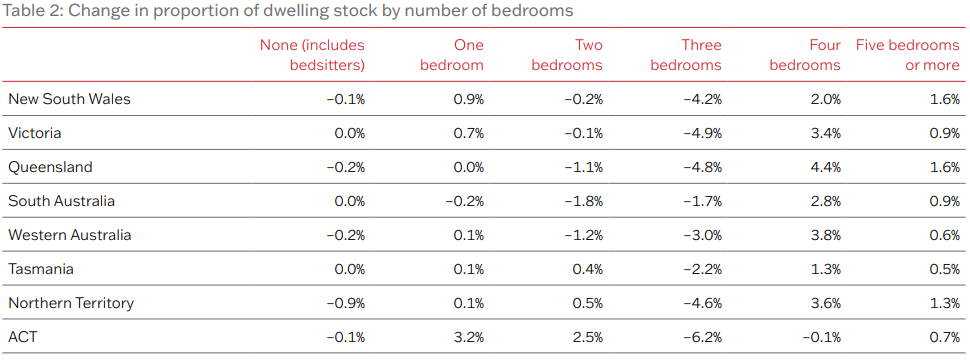
Around 1.5 million new homes built in 10 years in Australia, but housing is becoming less diverse
The growth of housing stock across Australia between 2006 and 2016 has been uneven and housing diversity has decreased
13 Aug 2021
Almost 1.5 million new homes were built in Australian in the 10 years from 2006 to 2016 but the growth of housing stock in each state and territory was uneven, ranging from 26 per cent in Western Australia to just 12 per cent in New South Wales, new AHURI research reveals. Only the building boom of 2015 to 2018 pushed NSW to reach supply levels comparable with other states.
The research, ‘The uneven distribution of housing supply 2006–2016’, undertaken for AHURI by researchers from Curtin University, University of Sydney and the University of Adelaide, examines the quantity, composition and distribution of new housing supply across Australia between 2006 and 2016 (the latest census data available), looks at what influenced the differences in local rates of production and what local and state governments can do to increase diverse new dwelling supply.

‘We wanted to understand patterns of new housing supply, whether supply is driven by price or other factors, and what government could do to encourage new supply in specific locations’ says lead researcher Professor Steven Rowley from Curtin University.
As well as varying growth rates between states and territories, the report found an uneven distribution of new housing in all mainland capital cities with Sydney demonstrating the most even balance between inner, middle and outer area supply.
‘When considered in relation to population numbers, the distribution of new supply was quite even across Greater Sydney,’ says Professor Rowley. ‘In contrast, Greater Melbourne saw strong supply in its inner and outer areas, but little in established middle areas while supply in Perth and Adelaide was mostly on the urban fringes.’
Relationships between new housing supply and price change are complex, with typically cheaper, greenfield housing areas recording modest price growth, but areas of pronounced multi-unit development experiencing higher price inflation over the period.
‘An interesting finding was that, over the 10 years, in all cities those local government areas (LGAs) that delivered more housing supply had below city average house prices,’ said Professor Rowley. ‘In fact, all of the high-supply LGAs in Perth and Brisbane were low-value areas. The outlier was Sydney, but even there 40 per cent of high-supply LGAs had a price below the city average.’
‘During the 10-year period we can argue supply actually became less diverse with an increase in the proportion of larger houses in most cities. This runs contrary to the policy direction within states and territories designed to increasing dwelling choice.’

The research observed that, across the nation, there was a fall in the number of three-bedroom dwellings and a rise in the number of four- and five-bedroom+ dwellings. The number of three bedroom dwellings fell from 47 per cent to 42 per cent of all housing stock, while the number of four-bedroom dwellings rose from 23 to 27 per cent.
‘During the 10-year period we can argue supply actually became less diverse with an increase in the proportion of larger houses in most cities. This runs contrary to the policy direction within states and territories designed to increasing dwelling choice.’
The research found that the key drivers of new supply were the availability of sites but critically sites where a developer was able to profitably deliver development.
‘Ultimately new dwelling supply relies on the private sector to be able to make money to compensate for the risk of undertaking development. If there is no profit there is no development, so market conditions must be right. Government can help by making the development approval process as efficient as possible and monitoring the costs of urban regulation’ said Professor Rowley.
On Wednesday, 16 September 2020, AHURI will host the Research Webinar, New housing supply in Australia – a 10 year analysis. This free webinar, led by Professor Steven Rowley, will present the findings from the research project. The research presentation will be followed by a discussion with AHURI’s Executive Director, Dr Michael Fotheringham, and audience Q&A. This 90-minute webinar will further discuss:
- The patterns of new housing supply across Australia including growth rates in states and territories, cities and local government areas.
- An analysis of some of the reasons for supply patterns and an overview of the change in dwelling stock by type (number of bedrooms).
- The role that government is able to play in supporting residential development within established and new communities.
Register for the free webinar on our website.
The report can be downloaded from the AHURI website at http://www.ahuri.edu.au/research/final-reports/334
